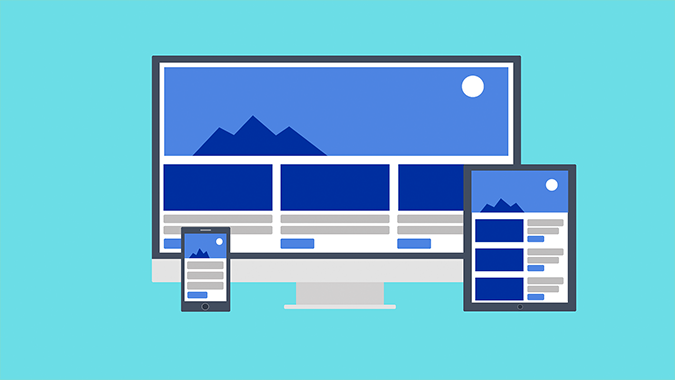Before we know how to reduce bounce rate for ecommerce websites, we first have to completely understand what bounce rate is.
Bounce rate is an Internet marketing term used in web traffic analysis. It represents the percentage of visitors who visit your website but leave (bounce) without viewing the other pages than the first page they have landed on
In simple words!
It is the measure of the effectiveness of the website that encourages the visitors to keep returning to the website. Usually, it is indicated through percentage and is represented in the proportion of visit that ends on the initial web page which the visitor sees.
Math behind it…
The sole purpose of checking a bounce rate is to determine the effectiveness of an entry page or the landing page that aims at creating visitor’s interest. If an entry page causes the visitors to open more pages to dig deeper into the website, it means it has a low bounce rate.

See How Our Experts Can Drive More Traffic to Your Website!
SEO: Boost your rankings and drive more organic traffic today!
Website Design/Development: Create a stunning website that converts visitors into customers.
Paid Media: Reach the right audience at the right time with expertly managed paid media.
On the contrary, a high bounce rate symbolizes a website that is not doing anything up to the mark to attract the vested interest of the visitor. It means that a visitor comes to your website and views a single page without looking at the other pages or taking some form of action within the website.
Is high bounce rate not good?
Well, it depends.
Bounce rate measure interpretation should be pertinent to a couple of important factors which include the conversion definition of a website and its business objectives. Poor performance can’t always be indicated by a higher bounce rate. This holds especially true in the case of a website that tends to share specific information on a particular subject, for example, a specific recipe, cuisine or a dictionary entry.
Bounce rate indicates a lack of content strategy
High bounce rate could mean that your website doesn’t feature a well organized and enticing landing page. In worst cases, you might be completely devoid of a landing page, thereby creating a Call To Action confusion on your home page. Remember reducing your bounce rate will help you improve the conversions and once you understand the conversion architecture, you can have an uncomplicated content strategy to grow your business.
Google analytics and bounce rate
Google Analytics lets you measure the bounce rates of your entire website, searched keywords, landing pages, and traffics that comes from a number of sources. It also calculate time spent on reading a blog post. All you need to do is add your website to Google Analytics through a Google account. You can ask your wordpress developers to add Google analytics code to your website and you should be ready to go
You can also manually calculate the Bounce rate by using the following equation:
Bounce rate = Total number of visits viewing one page / Total number of visits
For example, if your website has received 4,00,000 visits in one month, out of which 1,80,000 exit after viewing one page. Your website’s bounce rate for that particular month would be 1,80,000 divided by 4,00,000, which equals to 0.45 or 45%.
What are the possible causes of a High Bounce Rate?
You might be wondering about the main culprits behind a high bounce rate of an eCommerce website. Based on our years of experience in the field ecommerce website development &After doing the thorough research, We have listed down some common causes for a high bounce rate.
These include:
- Only a few relevant pages on the website
- No Call-to-Action on landing pages
- Ambiguous and unfriendly site navigation
- Cluttered UX and UI
- Unappealing Web Content (Images, Text Audio, Video)
- High load time of the landing page
- Too many intrusive ads or Popups intervening with the customer experience
- Website does not execute well with the devices that are used to access it
Is high bounce rate bad for E-commerce Websites?
If a probable customer lands on the product portfolio of your e-commerce website, the best result would be that he clicks ‘Buy’ tab and purchase the product. Even if he is drawn to visit other pages and add some products to the shopping cart, could count as another great outcome.
What will happen if probable customers or visitors are not clicking through your e-commerce website?
None of these favourable outcomes will be achieved. There is nothing worse than a “high” bounce rate for an e-commerce website. Besides, the bounce rate of an e-commerce website is interpreted in connection with the purchase conversion rate.
what is a good bounce rate?
It is believed that the average bounce rate of an e-commerce website is near 60%, top performers usually operate on the average bounce rate of 36%.
So how to reduce website bounce rate? Given below are the 10 proven ways to reduce bounce rate, thereby improving the conversions or enhancing the product purchase.
1) Content readability is the key
Lack of readability comprehends your target customers leave your site. User experience functions when your content is legible and readable.
Believe me!
Those large chunks of the text scare the hell out of your readers. It is best to avoid them. Another important factor to consider is the text formatting. A lot of blog sites have lousy formatting which leads to faster exit and a higher bounce rate.
Besides, your content should be optimized in the best way for Search Engine. It is advised that you break up the content posted in the proper order.
Suffice it with the title – big and bold. Then, a subtitle and bulleted points and short paragraphs to make the content post easier to read.
2) Avoid Annoying Popups
Many people still hate popups. Excessive use of popups, annoy the users and will ultimately lead to a higher bounce rate. To make the matters worse, some marketers make use of bullying and aggressive language in their popups.
In the year 2013, “70 % of the users found the popups irrelevant and annoying.”
It is also relevant in the year 2017 and beyond.
A Pop up Fact
However, there is no denying the fact that popups can increase your email list quickly. That’s ok, if you want it that way. But, if you want to establish a well-built site that generates organic traffic, consider limiting the popups. It is estimated that only 14% of the visitors consider responding to a popup. And most crucial, Hire Magento ecommerce developer to audit and optimize your website for optimum performance
3) A Compelling Call-to-Action
According to a survey conducted by Go-Globe, 47% of the websites have a clear C2A button and takes visitors less than 3 seconds to see. I hope your website is one of them.
Now that, you’ve attracted visitors with your catchy headline and awesome content, don’t lose them with a weak C2A.
Don’t you want a visitor to click, and think about your website?
C2A is irreplaceable
Many designers spend a lot of time curating the rotating sliders, background images, thumbnails, etc. Great, it is essential but to an extent.
What they fail to realize is that landing pages when filled with such distracting images, lowers the readability and steals the show from your Call-to-Action, thereby increasing the bounce rate.
4) Visitors love content links on sidebar
If your website runs a sidebar throughout, include the content links so that your visitors could enjoy.
Consider this example – a visitor ends up landing on any specific post on the website, without knowing anything about your domain, product listing or services. You could easily have a Company Profile or About Us page linked to the sidebar.
You can also provide a ‘first time guide’ for the visitor linked on the sidebar. Include the hot selling products, top viewed content or service portfolios to attract the visitors to dig deeper into your website.
5) Keywords with High Traffic Value
Key words are essential for an effective content marketing campaign. Start using high-ranking keywords to enhance the search performance as they’ll fetch the high-value traffic. It is observed by professional ecommerce seo service providers that a high-ranking keyword is somewhere in the center of traffic value, persona value, brand value and conversion value.
Check which are the magic keywords
All keywords are not meant to perform in the same way. Some would bring quality traffic while others will promise but won’t deliver. Diving deeper into Traffic Sources, under Search > Organic, will showcase which keyword has been performing best and has brought most visitors. It will showcase the numbers through organic search and its respective bounce rate.
6) Fast Loading Speeds
People like fast sites. And so does the Search Engines.
The websites that load fast are less prone to higher bounce rates. Chances of conversion increases by 7% for every 1 second saved in website loading process. A research revealed that a 2-second delay in loading during an eCommerce transaction leads to abandonment rates of up to 87%. It is significantly higher than the usual abandonment rate of 67%.
You can enhance your website load times by:
- Loading the background images through external CSS
- Optimising your images
- Minimising the white space, line returns and comment tags
- Removing unnecessary META content and META tags
- Minimising useless javascript and other client side scripting
Always remember, a faster loading site offers an amazing User Experience (UX), and a satisfying UX ensure higher conversions.
7) Responsive Design
Outdated and unresponsive designs are premier reasons for your online visitors not sticking around. This is due to the fact that your web content is hard to navigate on their mobile devices. They cannot easily access the web content or make a purchase the way they can through the desktop version of your website.
Why Responsive?
A responsive website resizes all the design elements including the images so that it can be displayed properly on varied sized devices.
With the screen getting smaller, the site changes a number of columns into a single column and the text size and images are adjusted to ensure enhanced readability.
Apart from lowering the bounce rate, a responsive web design also assists the search engines. Google too prefers having a single responsive web design than several other sites designed for varied devices.
8) Highlight Free Shipping and Express Delivery
If your e-commerce deals in offering a free shipping or express delivery, feel free to advertise it correctly. Your customers will always welcome it.
According to a study by Wharton, “Shoppers tend to spend 30% more per order when free shipping is included.”
Be smart enough to include the shipping charges in overall pricing. Similarly facility of Express Delivery is very much appreciated by the online shoppers. If you are able to provide and highlight these facilities in a right way, you will drastically lower the bounce rate.
However, be careful about:
Order margins when it varies . Start by raising the minimum order value It is advised that you raise price a little on entire product range and analyze the customer’s’ response by delivering free shipping throughout the particular type of product You can also have competition between free and paid shipping to see the rate of conversions
9) Implement Live Chat
Implementing live chat assist lowering the bounce rate and enhancing the conversion rate. Nearly 73% of the online shoppers were satisfied after using the facility of live chat. This effortlessly surpasses various other marketing channels that include social media, telephone or email.
e-Digital Research conducted a Customer Service Benchmark which indicates that live chat conveniently satisfies the online customers more than a mere phone call, email or conversations through social media.
10) Showcase Special deals on Webpage
It is always beneficial to showcase top discounts, deals, coupon codes, etc. on the top of a landing page. Such limited deals and discount vouchers and offers can assist you to engage the probable customer and much likely end up in getting a sale.
Bottom Line!
In this article, we’ve shared the insights about Bounce Rate and ways to reduce it for your eCommerce website. However, be mindful of the fact that without a clear superior quality content, even if you succeed at cutting the existing bounce rate in half, your risk of increasing it again is very high. It is essential that you quickly devise a good content strategy, keep at it and stay consistent.
Last, but not least
Even if you think that you can’t engage all your visitors, you can always try to ensure that they return to your website by timely updating them about special deals, offers, coupon codes, gift vouchers, cashback, etc through your social profiles, newsletters, and other online mediums.
Always remember, “the key is to make sure that once the probable customer lands on the page, they are drawn to making a purchase or visiting more pages on your website.”
What other things do you keep in mind to reduce the bounce rate for your websites? Have you had any success lately? Do share your thoughts and experience in the comments section below.




























Great article, thanks for sharing this wonderful information to us. I have got a lot of information about bounce rate, really it will help me a lot. keep on posting.
Thank you. Glad you liked it 🙂